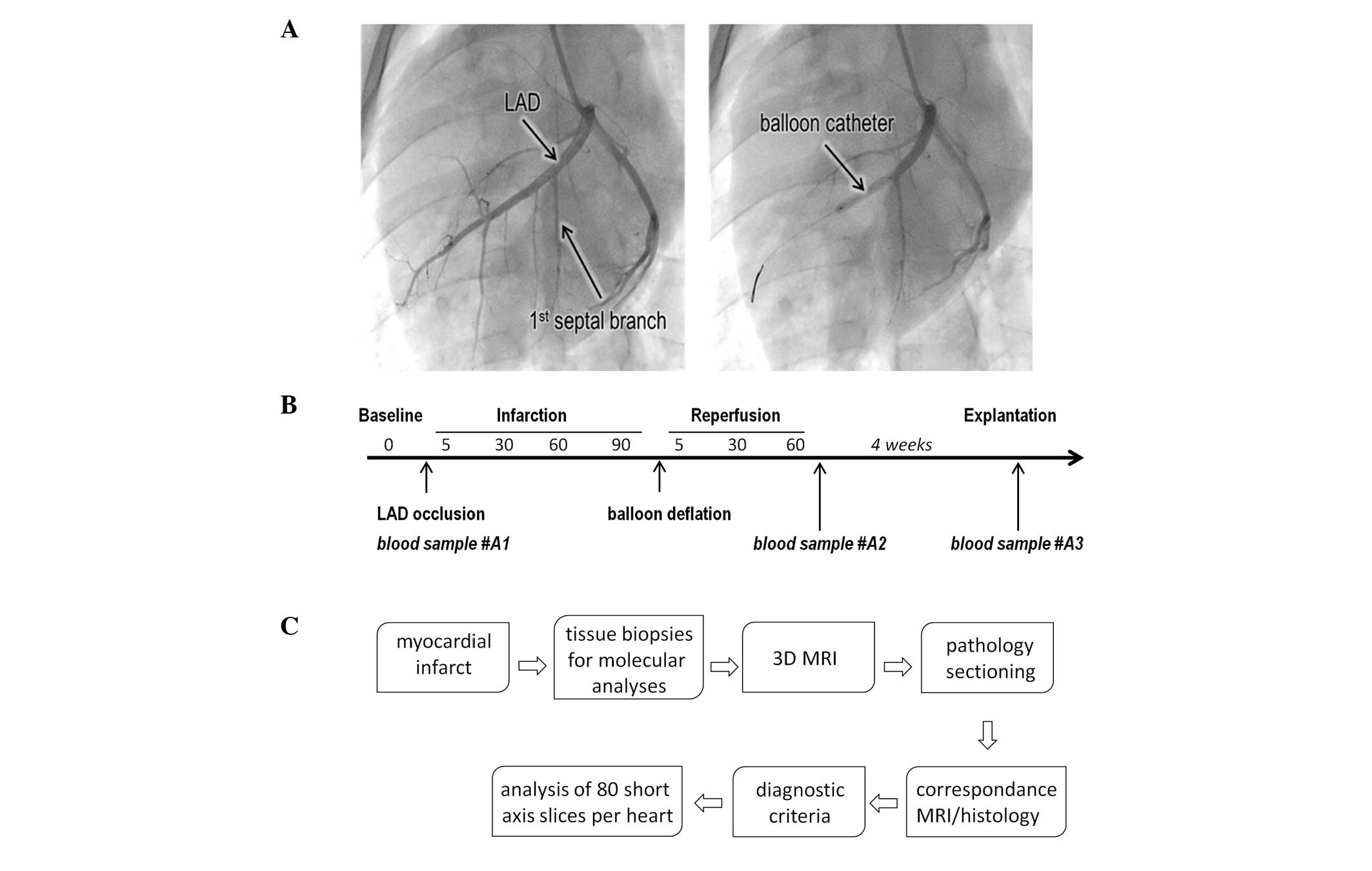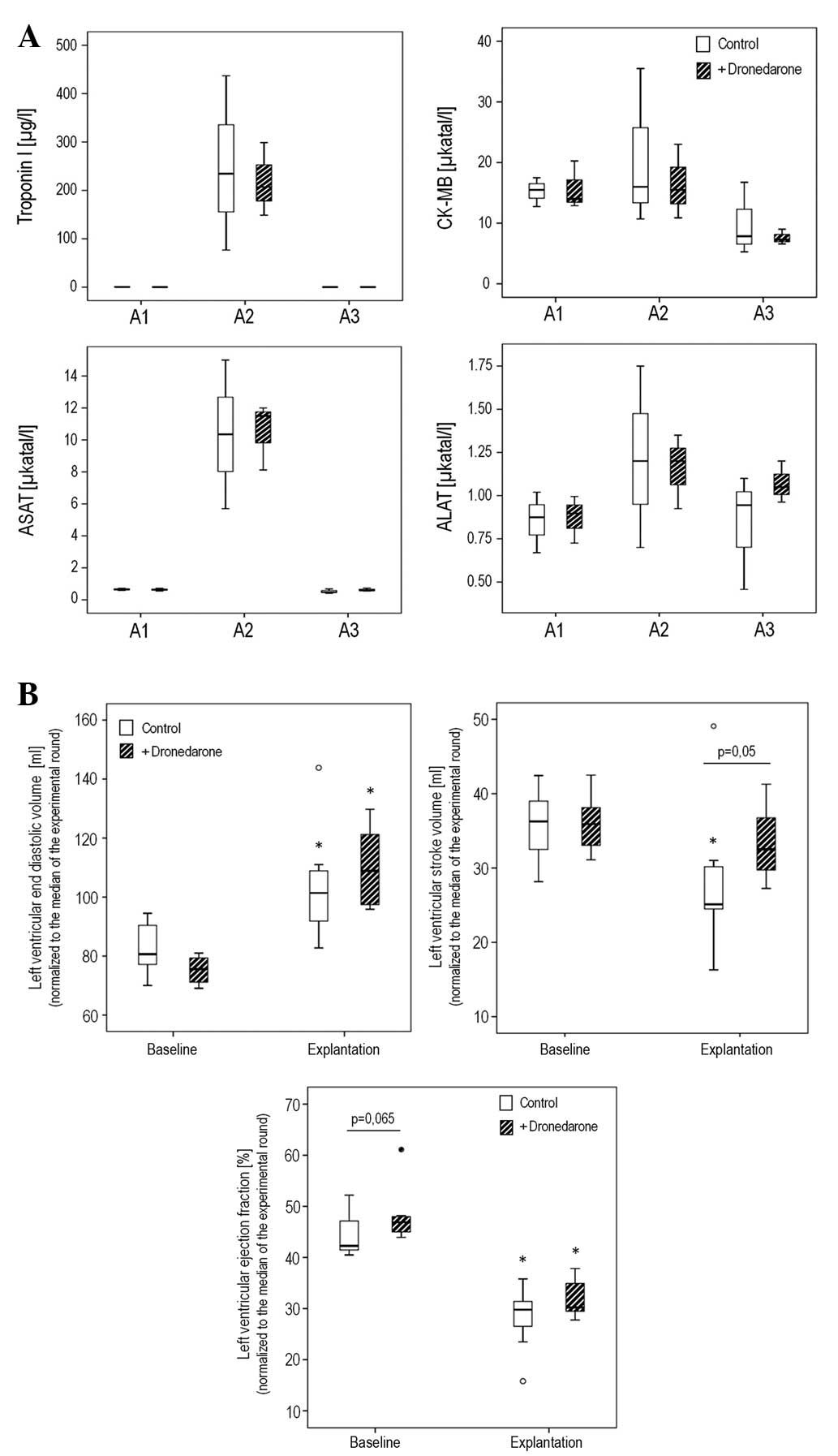|
1
|
Miyasaka Y, Barnes ME, Gersh BJ, Cha SS,
Bailey KR, Seward JB, Iwasaka T and Tsang TS: Coronary ischemic
events after first atrial fibrillation: Risk and survival. Am J
Med. 120:357–363. 2007. View Article : Google Scholar : PubMed/NCBI
|
|
2
|
Hohnloser SH, Crijns HJ, van Eickels M,
Gaudin C, Page RL, Torp-Pedersen C and Connolly SJ; ATHENA
Investigators: Effect of dronedarone on cardiovascular events in
atrial fibrillation. N Engl J Med. 360:668–678. 2009. View Article : Google Scholar : PubMed/NCBI
|
|
3
|
Pisters R, Hohnloser SH, Connolly SJ,
Torp-Pedersen C, Naditch-Brûlé L, Page RL and Crijns HJ: ATHENA
Investigators; Effect of dronedarone on clinical end points in
patients with atrial fibrillation and coronary heart disease:
Insights from the ATHENA trial. Europace. 16:174–181. 2014.
View Article : Google Scholar :
|
|
4
|
Saito D, Haraoka S, Ueda M, Fujimoto T,
Yoshida H and Ogino Y: Effect of atrial fibrillation on coronary
circulation and blood flow distribution across the left ventricular
wall in anesthetized open-chest dogs. Jpn Circ J. 42:417–423. 1978.
View Article : Google Scholar : PubMed/NCBI
|
|
5
|
Wichmann J, Ertl G, Rudolph G and Kochsiek
K: Effect of experimentally induced atrial fibrillation on coronary
circulation in dogs. Basic Res Cardiol. 78:473–491. 1983.
View Article : Google Scholar : PubMed/NCBI
|
|
6
|
Goette A, Bukowska A, Dobrev D,
Pfeiffenberger J, Morawietz H, Strugala D, Wiswedel I, Röhl FW,
Wolke C, Bergmann S, et al: Acute atrial tachyarrhythmia induces
angiotensin II type 1 receptor-mediated oxidative stress and
microvascular flow abnormalities in the ventricles. Eur Heart J.
30:1411–1420. 2009. View Article : Google Scholar : PubMed/NCBI
|
|
7
|
Bukowska A, Hammwöhner M, Sixdorf A,
Schild L, Wiswedel I, Röhl FW, Wolke C, Lendeckel U, Aderkast C,
Bochmann S, et al: Dronedarone prevents microcirculatory
abnormalities in the left ventricle during atrial tachypacing in
pigs. Br J Pharmacol. 166:964–980. 2012. View Article : Google Scholar :
|
|
8
|
Yang KC and Dudley SC Jr: Oxidative stress
and atrial fibrillation: finding a missing piece to the puzzle.
Circulation. 128:1724–1726. 2013. View Article : Google Scholar : PubMed/NCBI
|
|
9
|
Mayyas F, Alzoubi KH and Van Wagoner DR:
Impact of aldosterone antagonists on the substrate for atrial
fibrillation: Aldosterone promotes oxidative stress and atrial
structural/electrical remodeling. Int J Cardiol. 168:5135–5142.
2013. View Article : Google Scholar : PubMed/NCBI
|
|
10
|
Bonilla IM, Sridhar A, Györke S, Cardounel
AJ and Carnes CA: Nitric oxide synthases and atrial fibrillation.
Front Physiol. 3:1052012. View Article : Google Scholar : PubMed/NCBI
|
|
11
|
Raddino R, Poli E, Pelà G, Gargano M and
Manca C: Inhibitory actions of amiodarone on the isolated rabbit
heart and aorta. Gen Pharmacol. 20:313–317. 1989. View Article : Google Scholar : PubMed/NCBI
|
|
12
|
Goette A, Bukowska A, Lillig CH and
Lendeckel U: Oxidative stress and microcirculatory flow
abnormalities in the ventricles during atrial fibrillation. Front
Physiol. 3:2362012. View Article : Google Scholar : PubMed/NCBI
|
|
13
|
Hodeige D, Heyndrickx JP, Chatelain P and
Manning A: SR 33589, a new amiodarone-like antiarrhythmic agent:
Anti-adrenoceptor activity in anaesthetized and conscious dogs. Eur
J Pharmacol. 279:25–32. 1995. View Article : Google Scholar : PubMed/NCBI
|
|
14
|
Sobrado LF, Varone BB, Machado AD, Nearing
BD, Zeng D, Belardinelli L and Verrier RL: Dronedarone's inhibition
of If current is the primary mechanism responsible for its
bradycardic effect. J Cardiovasc Electrophysiol. 24:914–918. 2013.
View Article : Google Scholar : PubMed/NCBI
|
|
15
|
Heusch G: Heart rate in the
pathophysiology of coronary blood flow and myocardial ischaemia:
Benefit from selective bradycardic agents. Br J Pharmacol.
153:1589–1601. 2008. View Article : Google Scholar : PubMed/NCBI
|
|
16
|
Skyschally A and Heusch G: Reduction of
myocardial infarct size by dronedarone in pigs-a pleiotropic
action? Cardiovasc Drugs Ther. 25:197–201. 2011. View Article : Google Scholar : PubMed/NCBI
|
|
17
|
Blankesteijn WM, Creemers E, Lutgens E,
Cleutjens JP, Daemen MJ and Smits JF: Dynamics of cardiac wound
healing following myocardial infarction: Observations in
genetically altered mice. Acta Physiol Scand. 173:75–82. 2001.
View Article : Google Scholar : PubMed/NCBI
|
|
18
|
Plank G, Burton RA, Hales P, Bishop M,
Mansoori T, Bernabeu MO, Garny A, Prassl AJ, Bollensdorff C, Mason
F, et al: Generation of histo-anatomically representative models of
the individual heart: tools and application. Philos Trans A Math
Phys Eng Sci. 367:2257–2292. 2009. View Article : Google Scholar : PubMed/NCBI
|
|
19
|
Pop M, Ghugre NR, Ramanan V, Morikawa L,
Stanisz G, Dick AJ and Wright GA: Quantification of fibrosis in
infarcted swine hearts by ex vivo late gadolinium-enhancement and
diffusion-weighted MRI methods. Phys Med Biol. 58:5009–5028. 2013.
View Article : Google Scholar : PubMed/NCBI
|
|
20
|
Fridericia LS: Die Systolendauer im
Elektrokardiogramm bei normalen Menschen und bei Herzkranken. Acta
Med Scand. 53:469–486. 1920.In German. View Article : Google Scholar
|
|
21
|
Bergmeyer HU, Scheibe P and Wahlefeld AW:
Optimization of methods for aspartate aminotransferase and alanine
aminotransferase. Clin Chem. 24:58–73. 1978.PubMed/NCBI
|
|
22
|
Neumeier D, Prellwitz W, Würzburg U,
Brundobler M, Olbermann M, Just H-J, Knedel M and Lang H:
Determination of creatine kinase isoenzyme MB activity in serum
using immunological inhibition of creatine kinase M subunit
activity. Activity kinetics and diagnostic significance in
myocardial infarction. Clin Chim Acta. 73:445–451. 1976. View Article : Google Scholar : PubMed/NCBI
|
|
23
|
Ullman EF, Kirakossian H, Singh S, Wu ZP,
Irvin BR, Pease JS, Switchenko AC, Irvine JD, Dafforn A, Skold CN,
et al: Luminescent oxygen channeling immunoassay: Measurement of
particle binding kinetics by chemiluminescence. Proc Natl Acad Sci
USA. 91:5426–5430. 1994. View Article : Google Scholar : PubMed/NCBI
|
|
24
|
Goubran M, Crukley C, de Ribaupierre S,
Peters TM and Khan AR: Image registration of ex-vivo MRI to
sparsely sectioned histology of hippocampal and neocorticatemporal
lobe specimens. Neuroimage. 83:770–781. 2013. View Article : Google Scholar : PubMed/NCBI
|
|
25
|
Shah DJ, Kim HW, James O, Parker M, Wu E,
Bonow RO, Judd RM and Kim RJ: Prevalence of regional myocardial
thinning and relationship with myocardial scarring in patients with
coronary artery disease. JAMA. 309:909–918. 2013. View Article : Google Scholar : PubMed/NCBI
|
|
26
|
Nieuwlaat R, Capucci A, Camm AJ, Olsson
SB, Andresen D, Davies DW, Cobbe S, Breithardt G, Le Heuzey JY,
Prins MH, et al: Atrial fibrillation management: a prospective
survey in ESC member countries: The Euro Heart Survey on Atrial
Fibrillation. Eur Heart J. 26:2422–2434. 2005. View Article : Google Scholar : PubMed/NCBI
|
|
27
|
Singh BN, Connolly SJ, Crijns HJ, Roy D,
Kowey PR, Capucci A, Radzik D and Aliot EM; Hohnloser SH; EURIDIS
and ADONIS Investigators: Dronedarone for maintenance of sinus
rhythm in atrial fibrillation or flutter. N Engl J Med.
357:987–999. 2007. View Article : Google Scholar : PubMed/NCBI
|
|
28
|
Camm AJ, Lip GY, De Caterina R, Savelieva
I, Atar D, Hohnloser SH, Hindricks G and Kirchhof P: ESC Committee
for Practice Guidelines-CPG; Document Reviewers: 2012 focused
update of the ESC Guidelines for the management of atrial
fibrillation: an update of the 2010 ESC Guidelines for the
management of atrial fibrillation-developed with the special
contribution of the European Heart Rhythm Association. Europace.
14:1385–1413. 2012. View Article : Google Scholar : PubMed/NCBI
|
|
29
|
Friberg L: Safety of dronedarone in
routine clinical care. J Am Coll Cardiol. 63:2376–2384. 2014.
View Article : Google Scholar : PubMed/NCBI
|
|
30
|
Hohnloser S: Dronedarone: 'Real-world'
data vis-à-vis data from randomized clinical trials. J Am Coll
Cardiol. 63:2385–2387. 2014. View Article : Google Scholar : PubMed/NCBI
|
|
31
|
Engelhorn T, Schwarz MA, Heusch G,
Doerfler A and Schulz R: Reduction of cerebral infarct size by
dronedarone. Cardiovasc Drugs Ther. 25:523–529. 2011. View Article : Google Scholar : PubMed/NCBI
|
|
32
|
Finance O, Manning A and Chatelain P:
Effects of a new amiodarone-like agent, SR 33589, in comparison to
amiodarone, D, L-sotalol and lignocaine, on ischemia-induced
ventricular arrhythmias in anesthetized pigs. J Cardiovasc
Pharmacol. 26:570–576. 1995. View Article : Google Scholar : PubMed/NCBI
|
|
33
|
Hodeige D, Heyndrickx JP, Chatelain P and
Manning A: SR 33589, a new amiodarone-like antiarrhythmic agent:
Anti-adrenoceptor activity in anaesthetized and conscious dogs. Eur
J Pharmacol. 279:25–32. 1995. View Article : Google Scholar : PubMed/NCBI
|
|
34
|
Manning AS, Bruyninckx C, Ramboux J and
Chatelain P: SR 33589, a new amiodarone-like agent: Effect on
ischemia- and reperfusion-induced arrhythmias in anesthetized rats.
J Cardiovasc Pharmacol. 26:453–461. 1995. View Article : Google Scholar : PubMed/NCBI
|
|
35
|
Alexandre J, Rouet R, Puddu PE, Beygui F,
Manrique A and Milliez P: Dronedarone versus amiodarone in
preventing premature ventricular contractions in an in vitro model
of 'border zone'. J Cardiovasc Pharmacol. 63:49–57. 2014.
View Article : Google Scholar
|
|
36
|
Dagres N, Varounis C, Iliodromitis EK,
Lekakis JP, Rallidis LS and Anastasiou-Nana M: Dronedarone and the
incidence of stroke in patients with paroxysmal or persistent
atrial fibrillation: A systematic review and meta-analysis of
randomized trials. Am J Cardiovasc Drugs. 11:395–400. 2011.
View Article : Google Scholar : PubMed/NCBI
|
|
37
|
Verrier RL, Pagotto VP, Kanas AF, Sobrado
MF, Nearing BD, Zeng D and Belardinelli L: Low doses of ranolazine
and dronedarone in combination exert potent protection against
atrial fibrillation and vulnerability to ventricular arrhythmias
during acute myocardial ischemia. Heart Rhythm. 10:121–127. 2013.
View Article : Google Scholar
|
|
38
|
Del Galdo F, Wermuth PJ, Addya S, Fortina
P and Jimenez SA: NFκB activation and stimulation of chemokine
production in normal human macrophages by the gadolinium-based
magnetic resonance contrast agent Omniscan: Possible role in the
pathogenesis of nephrogenic systemic fibrosis. Ann Rheum Dis.
69:2024–2033. 2010. View Article : Google Scholar : PubMed/NCBI
|












